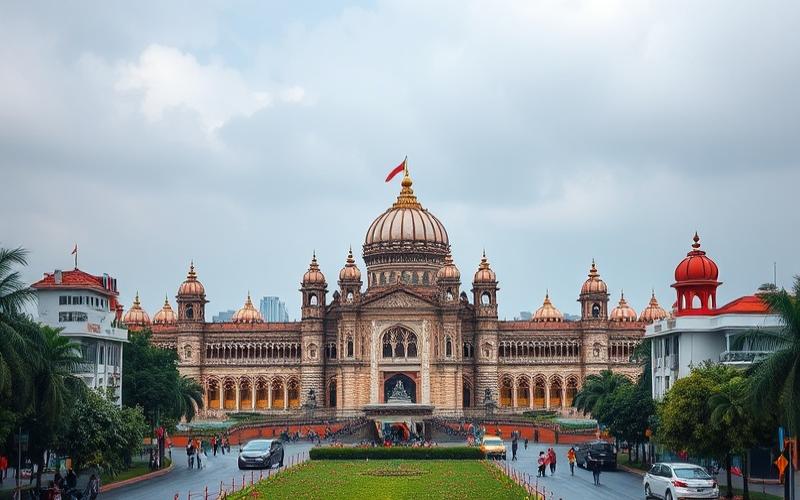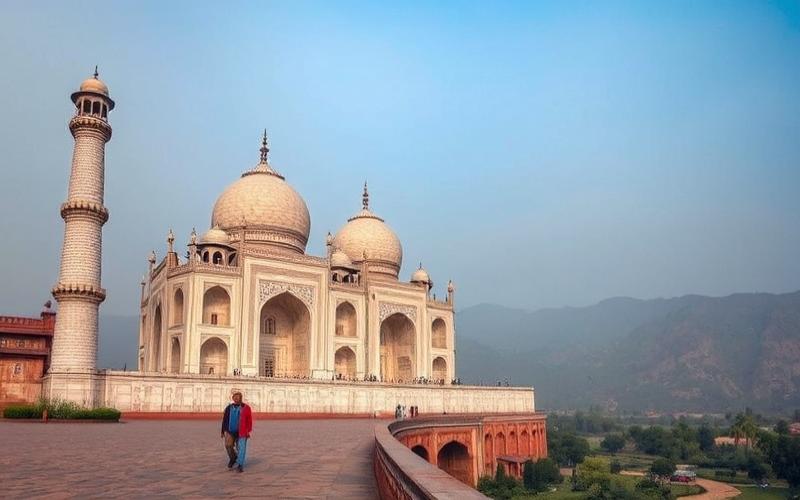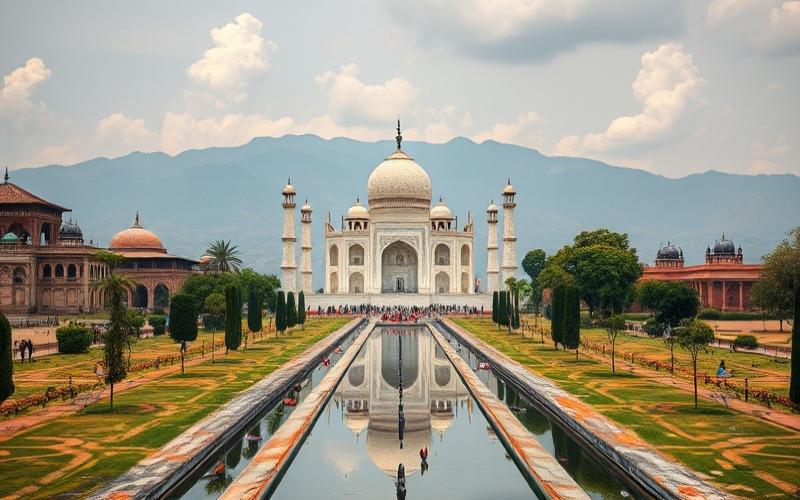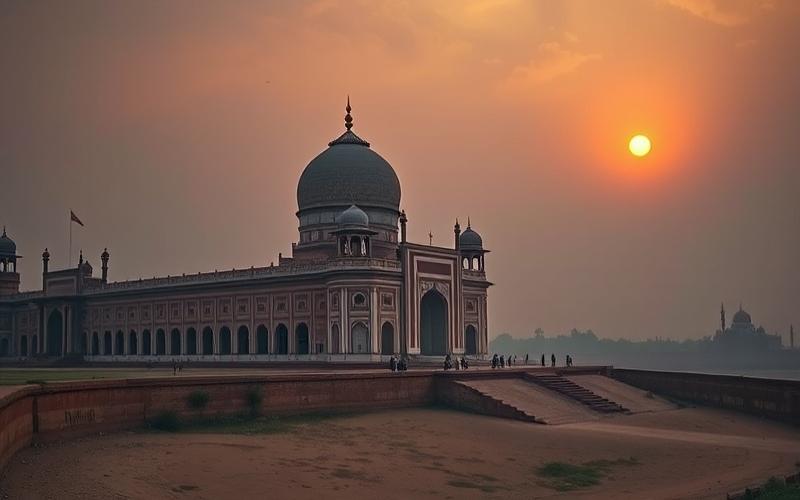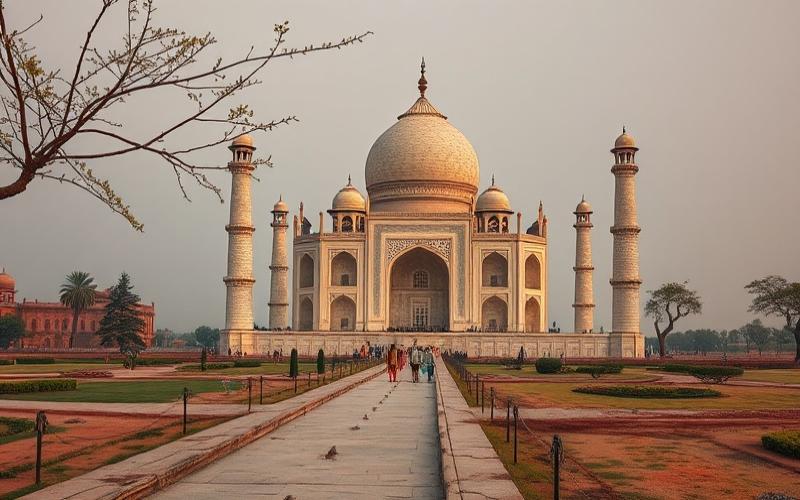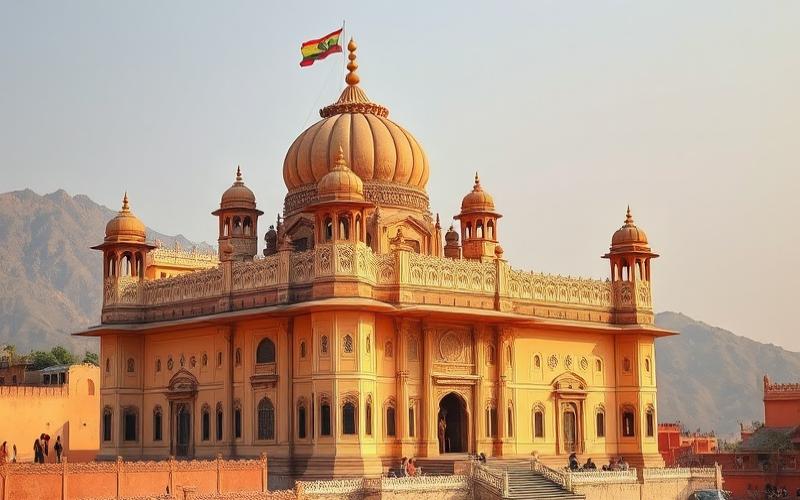
 Published on and written by Cyril Jarnias
Published on and written by Cyril Jarnias
Traveling to India is a unique sensory experience, where every street corner holds a culinary adventure ready to tantalize your taste buds. For expatriates, settling in this land of a thousand flavors can be both fascinating and bewildering, especially when faced with the staggering array of regional dishes and recipes.
This article aims to guide newcomers through the complexity and richness of Indian cuisine, from must-try classics like curry to lesser-known delights from local markets.
By delving deeper into culinary traditions, you’ll have the opportunity not only to taste delicious dishes but also to understand the culture and history infused in every bite.
Exploring India’s Unique Flavors: A Culinary Journey for Expatriates
Indian cuisine stands out for its exceptional diversity, reflecting the country’s cultural, geographical, and historical mosaic. Each region offers a distinct culinary identity, where traditions, ingredients, and techniques blend to create unforgettable flavors.
| Region | Typical Ingredients | Iconic Dishes | Characteristics |
|---|---|---|---|
| North | Basmati, paneer, ghee, warm spices (cumin, garam masala) | Butter chicken, dal makhani, paneer curry, naan | Rich, often creamy dishes, strong Mughal influence |
| South | Rice, coconut, lentils, spicy seasonings | Masala dosa, sambar, biryani, rasam | Rice-based dishes, tangy flavors, abundant use of coconut |
| East | Mustard, fish, rice | Macher jhol, shorshe ilish | Predominance of fish with tangy or sweet flavors |
| West | Vegetables, various spices | Thali, dhokla, poha | Vegetarian cuisine, varied thalis, balanced flavors |
Essential Local Ingredients:
- Spices: cardamom, cumin, coriander, turmeric, chili, garam masala.
- Basmati rice: essential in the north, particularly for biryani.
- Lentils: base for dal, found throughout the country.
- Coconut: omnipresent in the south (oil, milk, grated).
- Paneer: fresh cheese, staple of northern vegetarian curries.
Iconic Dishes to Discover:
- Biryani: fragrant spiced rice with meat or vegetables, symbol of Mughal influence.
- Masala dosa: rice crepe stuffed with potatoes, served with sambar and chutneys, southern staple.
- Paneer curry: fresh cheese in creamy, often spicy sauce.
- Thali: assortment of small dishes served on a platter, a true flavor journey with every bite.
Tips for Safely Experiencing Street Food:
- Choose stalls popular with locals.
- Opt for food cooked in front of you and served hot.
- Avoid raw vegetables and unbottled water.
- Wash hands before and after eating.
- Gradually try spicy dishes to acclimate your palate.
Historical and Cultural Influences:
Mughal influence enriched northern cuisine with refined dishes rich in cream, nuts, saffron and dried fruits.
Maritime exchanges in the south introduced new spices and techniques, creating exotic flavors.
Religious traditions, particularly Hinduism and Islam, shaped eating habits, promoting vegetarianism or avoidance of beef and pork depending on the region.
Must-Try Culinary Experiences:
- Join a home cooking class to learn masala secrets and bread preparation.
- Explore spice markets to discover the olfactory and visual richness of Indian powders and seeds.
- Sample thalis across different regions to understand flavor balance (sweet, salty, sour, bitter, spicy, astringent).
- Try street specialties like samosas, pani puri and chaat for authentic immersion in Indian daily life.
A culinary journey through India promises a sensory adventure where every region, every market, and every meal tells a unique story.
Good to Know:
Exploring India’s unique flavors invites you to discover a cuisine rich in regional diversity, ranging from northern spicy dishes to southern aromatic delicacies. Local ingredients like spices, basmati rice and lentils play a central role, enhancing iconic dishes such as biryani, masala dosa, paneer curry and thali. For expatriates, safely sampling street food involves choosing popular local stalls and opting for freshly cooked dishes. India’s culinary heritage, forged by centuries of historical and cultural influences, results in a varied and surprising gastronomic offering where every dish tells a different story. Culinary experiences like cooking classes with locals or guided spice market tours offer fascinating immersion into Indian cuisine, helping you better understand flavor subtleties and historical complexity.
Understanding the Cultural Significance of Indian Dishes in Daily Life
The Use of Spices in India
Spices are at the heart of Indian cuisine and go beyond mere flavor enhancement. They embody the country’s cultural richness and diversity. Each spice, like turmeric (symbolizing purity and prosperity), cumin, coriander or cardamom, carries symbolic and spiritual meaning. The blending of spices in a dish is never random: it reflects the sought-after balance between flavors, but also between body and spirit, particularly in Ayurvedic tradition.
Food Rituals and Religion
Indian food rituals are deeply connected to religion and festivals. Certain dishes are reserved for sacred occasions:
- Pongal, a dish made from rice and lentils, is prepared during the同名 festival in Tamil Nadu to celebrate the harvest.
- Onam Sadhya, a vegetarian banquet from Kerala, marks the Onam festival and consists of dozens of preparations served on a banana leaf.
These rituals highlight food’s importance in Indian spirituality: every dish offered during a festival is an act of devotion, and food shared in temples (prasad) symbolizes divine blessing.
Regional Diversity and Cultural Impact
| Region | Key Ingredients | Iconic Dishes | Cultural Influence |
|---|---|---|---|
| Punjab | Milk, wheat, strong spices | Butter chicken, dal makhani | Mughal influence, hearty meals |
| Kerala | Coconut, rice | Sadya, appam, thoran | Vegetarian tradition, Onam festivals |
| Bengal | Fish, mustard | Fish curry, rasgulla | Presence of sweets during rituals |
| Gujarat | Vegetables, legumes | Dhokla, thali | Vegetarian cuisine, family sharing |
| Tamil Nadu | Rice, lentils, spices | Sambar, dosa, pongal | Pongal ritual, festive dishes |
Regional diversity structures Indians’ cultural and social identity: every family, community, and region celebrates food in its own way while participating in a common heritage.
The Place of Family Meals and Hospitality
Family meals are a cornerstone of daily life. They represent sharing moments where ancestral recipes are passed down and intergenerational bonds are strengthened. Indian hospitality is proverbial: offering food to a guest is a sacred act. It’s common to offer masala tea or homemade dishes to any visitor, illustrating generosity and conviviality.
Transmission and Traditions
Dish preparation is often orally transmitted knowledge: grandmothers teach grandchildren how to measure spices, knead dough, or serve meals according to family customs. This transmission process ensures the preservation of culinary and cultural traditions.
Key Anecdotes and Events
- During Hindu weddings, biryani – a festive dish of fragrant rice and spices – is essential and symbolizes family union.
- For Diwali, families prepare sweets like ladoo or barfi, shared with neighbors and friends to strengthen social bonds.
- When a child is born, dairy-based and sweet dishes are offered to wish prosperity to the new family.
- Chai tea, shared at all hours, is a true daily ritual: it brings together neighbors, friends and family members for moments of conviviality.
Tips for Expatriates
- Participating in meal preparation or local festivals is the best way to integrate: accepting dinner invitations, tasting traditional dishes and asking about their history is always appreciated.
- Learning to eat with your hands, according to local custom, promotes immersion and respect for traditions.
- Discovering spice markets, observing dish preparation during festivals, and understanding each ingredient’s symbolism will enrich your cultural experience.
Indian cuisine isn’t just a sensory pleasure; it’s a language, a bridge between generations, and a permanent invitation to discovery and sharing.
Good to Know:
In India, dishes hold a central place in daily life, from the richness of spices like turmeric or cumin – symbolizing purification and prosperity – to food rituals deeply rooted in religious and festive traditions. Each region has its specialties, such as dosa in the south or biryani in the north, reflecting a diverse cultural heritage. Meals, often shared with family, are gathering moments that strengthen intergenerational bonds. Particularly during weddings or festivals like Diwali, specific dishes such as mithai (sweets) play a central role, illustrating both tradition and hospitality. Integrating and understanding these culinary practices allows expatriates not only to discover Indian cuisine’s richness but also to融入 social and cultural life.
Practical Tips for Integrating at the Indian Table: Etiquette and Traditions
- Eat with your right hand: It’s essential to use only your right hand for eating. The left hand is considered impure and shouldn’t be used to bring food to your mouth or pass dishes.
- Hand washing: Thoroughly washing hands before and after meals is fundamental practice, whether eating with hands or utensils.
- Dish arrangement:
- Dishes are typically arranged around a large plate (thali) or on a banana leaf depending on the region.
- All dishes are served simultaneously; there’s no concept of “courses” like in some Western countries.
- Guests serve themselves, respecting family hierarchy.
| Practice | Detail |
|---|---|
| Hand usage | Right hand only |
| Washing | Before and after meal |
| Arrangement | Varied dishes around thali or on banana leaf |
| Serving | Elders served first |
- Don’t waste: Take only what you can finish. Leaving too much food on your plate may be perceived as disrespectful to the cook.
- Remove shoes: Before entering a traditional Indian home, remove your shoes out of respect for the household and to maintain cleanliness.
- Respect social hierarchy:
- Elderly people begin serving themselves first.
- Often wait for the host’s signal before starting to eat; sometimes a prayer precedes the meal.
Practical Tips During an Indian Meal
- Never share personal utensils or your glass.
- Never serve someone directly from your plate/thali.
- To express satisfaction, finish your plate (if possible). A clean plate is perceived as a compliment to the cook.
- To politely decline a dish if you’re full, simply explain (“No thank you, it was delicious but I’m not hungry anymore”) without insisting or abruptly rejecting the offer.
Complimenting Your Host
Thank you very much for this wonderful meal. It was truly delicious!
This type of phrase values not only culinary talent but also the hospitality received. Adapting your thanks to local style – sometimes with a slight bow or joined palms (“Namaste”) – also shows respect for Indian culture.
Good to Know:
Before enjoying an Indian meal, it’s essential to wash your hands since food is often eaten with fingers, exclusively using the right hand to respect traditions. Remove your shoes when entering a home and let elders serve themselves first as social hierarchy is highly respected. Dishes are often arranged in the center of the table for sharing, and wasting food is frowned upon, so serve yourself moderately each time. If you’re full, politely decline additional food by touching your stomach with a smile to indicate you enjoyed the meal. To compliment your host, simply state that the meal was delicious and express gratitude through praise of the local cuisine.
Finding International Ingredients in India: A Guide for Food-Loving Expatriates
Common Challenges Finding International Ingredients in India:
- Limited availability: Many Western, Asian or Middle Eastern ingredients remain difficult to find, even in major cities.
- Variety and freshness: Imported products are sometimes available in limited quantities or with reduced freshness due to transport delays.
- High prices: Customs duties and logistics costs often result in significantly higher prices than international standards.
- Language barrier: Searching for specific ingredients can be complicated by terminology, packaging or translation differences.
- Local substitutes: The absence of certain products pushes you to seek local alternatives, which may alter recipes’ final taste.
Indian Cities Where Finding International Products is Easier:
| City | Main Advantages |
|---|---|
| Mumbai | Numerous specialty grocery stores and cosmopolitan neighborhoods |
| Delhi (NCR) | International supermarkets, diplomatic quarters |
| Bangalore | Strong expatriate community, varied supermarkets |
| Chennai | Presence of international chains and imported grocery stores |
| Pune | Gourmet shops for expatriates, large foreign population |
| Hyderabad | Growth of fine grocery stores in expatriate neighborhoods |
Markets or Neighborhoods Renowned for Imported Products:
- Khan Market (Delhi): High-end supermarkets, European, Japanese, Korean products, etc.
- Crawford Market (Mumbai): Wide selection of international foods, rare spices.
- Koramangala (Bangalore): Fine grocery stores, organic and imported products.
- Nungambakkam (Chennai): Specialty shops for expatriates.
- Jubilee Hills (Hyderabad): International food stores.
Online Platforms and International Food Delivery Services:
- Nature’s Basket: Wide selection of imported products, delivery to most major cities.
- BigBasket: “International foods” section with home delivery.
- Amazon India: International grocery section with nationwide delivery.
- Gourmetdelight: Specialized in fine and imported products, delivery to multiple cities.
- Foodhall: Premium grocery chain with delivery service.
Practical Tips for Replacing International Ingredients with Local Equivalents:
- Liquid cream: Use malai (boiled milk cream) or whipped thick yogurt.
- Parmesan: Replace with aged Amul or Britannia cheese, finely grated.
- Herbes de Provence: Blend of local thyme, basil, oregano.
- European sandwich bread: Make homemade bread with local flour (maida).
- Beef: Substitute with buffalo or chicken depending on recipes.
Expatriate Testimonials and Anecdotes:
“At first, I spent hours looking for blue cheese or balsamic vinegar. Eventually, I learned to love paneer and local vinegars, and my recipes took on an unexpected Indian twist.”
— Clara, French expat in Pune
“I discovered that local yogurt works perfectly to replace sour cream in my sauces, and the taste is very pleasant!”
— Jonas, German expat in Bangalore
Indian Cuisine’s Influence on International Dishes:
- Expatriates often adopt Indian spices (cumin, coriander, garam masala) in Western dishes, creating unique fusion foods (e.g., curry pasta, paneer tikka pizzas).
- Indian breads (naan, roti) sometimes replace baguettes or pita bread in international sandwiches.
- Western desserts like cheesecake take on new dimensions with Alphonso mango or cardamom.
Tip:
Exploring local markets and staying open to alternatives allows you to recreate familiar flavors while discovering new ingredients. Cooking then becomes an adventure ground where India and the entire world meet on your plate.
Good to Know:
Expatriates in India may face challenges finding international ingredients, but cities like Mumbai, Delhi and Bangalore offer supermarkets such as Nature’s Basket and Godrej that provide a wide range of imported products. In Mumbai, Crawford Market and Pune’s Koregaon Park area are renowned for their specialty grocery stores. Online platforms like BigBasket and Amazon Pantry also facilitate access to these products through their delivery services. To adapt your recipes, consider substituting mascarpone with paneer or use maida flour instead of all-purpose flour. Expatriates share that Indian cuisine often influences their dishes, adding local spices to create unique and flavorful blends. By exploring local markets, you’ll discover creative ways to incorporate Indian ingredients without losing the taste of your original recipes.
Disclaimer: The information provided on this website is for informational purposes only and does not constitute financial, legal, or professional advice. We encourage you to consult qualified experts before making any investment, real estate, or expatriation decisions. Although we strive to maintain up-to-date and accurate information, we do not guarantee the completeness, accuracy, or timeliness of the proposed content. As investment and expatriation involve risks, we disclaim any liability for potential losses or damages arising from the use of this site. Your use of this site confirms your acceptance of these terms and your understanding of the associated risks.










